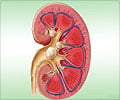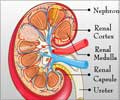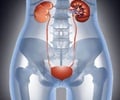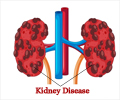High risk for renal scarring with first UTI in kids and teens with abnormal kidney ultrasonography finding or with fever of at least 102 degrees and infected with organism other than E.Coli.

Background: UTIs are a common and potentially serious bacterial infection in young children. UTIs can lead to permanent renal scarring in up to 15 percent of cases in this population. Significant scarring can lead to reduced kidney function, which has been associated with hypertension, pre-eclampsia and end-stage renal disease later in life.
How the Study Was Conducted: The authors reviewed available medical literature to identify factors linked to the development of renal scarring and to develop a clinical prediction model that could be used to identify children at risk for scarring. The meta-analysis included data from nine cohort studies with 1,280 children (up to age 18 years).
Results: Of the 1,280 children, 199 (15.5 percent) had renal scarring. Factors associated with renal scarring were a fever of at least 102 degrees, infection with an organism other than E.coli, an abnormal kidney ultrasonography finding, polymorphonuclear cell count of greater than 60 percent, C-reactive protein level of greater than 40 mg/L and the presence of vesicoureteral reflux (abnormal urine flow backward from the bladder to the urinary tract). Children appear to have twice the baseline risk of scarring if they have an abnormal kidney ultrasonography finding or with a combination of a fever of at least 102 degrees and infection with an organism other than E.coli. According to the authors, this prediction model could be used to identify nearly 45 percent of the children who go on to scar.
Discussion: "Early identification of children at risk for renal scarring using the prediction rules developed in this study could help clinicians deliver specific treatment and follow-up for this small subgroup in the future."
Source-Eurekalert















